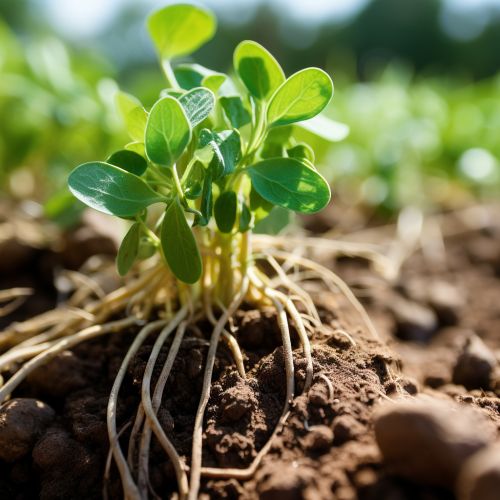The Chemistry of Nitrogen Fixation in Legumes
Introduction
Nitrogen fixation is a critical biological process that converts atmospheric nitrogen (N_2) into ammonia (NH_3), a form that can be utilized by plants. In the context of leguminous plants, this process is facilitated by symbiotic bacteria known as rhizobia. This article delves into the chemistry of nitrogen fixation in legumes, exploring the biochemical reactions, the role of enzymes, and the symbiotic relationship between legumes and rhizobia.


Nitrogen Fixation Process
The process of nitrogen fixation in legumes begins when rhizobia colonize the root hairs of the host plant. This triggers the formation of root nodules, specialized structures where nitrogen fixation occurs. The rhizobia within these nodules convert atmospheric nitrogen into ammonia through a series of enzymatic reactions.
Enzymatic Reactions
The key enzyme involved in nitrogen fixation is nitrogenase, a complex enzyme that catalyzes the reduction of nitrogen to ammonia. Nitrogenase is composed of two metalloproteins: the molybdenum-iron (MoFe) protein and the iron (Fe) protein. The MoFe protein is the site of nitrogen reduction, while the Fe protein supplies electrons to the MoFe protein.
The nitrogenase reaction can be represented as follows:
N_2 + 8H^+ + 8e^- + 16 ATP → 2NH_3 + H_2 + 16 ADP + 16 Pi
This reaction indicates that nitrogen fixation is an energy-intensive process, requiring 16 molecules of ATP for the reduction of one molecule of nitrogen.
Symbiotic Relationship
The symbiotic relationship between legumes and rhizobia is mutually beneficial. The legume provides the rhizobia with a protected environment and nutrients, while the rhizobia provide the legume with a source of nitrogen in the form of ammonia.
Signal Exchange
The establishment of this symbiosis involves a complex signal exchange between the legume and the rhizobia. The legume secretes flavonoids that attract rhizobia, and in response, the rhizobia produce nodulation (Nod) factors that stimulate nodule formation in the legume roots.
Nodule Formation
Once the rhizobia have colonized the root hairs, they trigger the formation of root nodules. These nodules are rich in leghemoglobin, a protein that binds oxygen and keeps the nodule environment anaerobic, which is essential for the functioning of nitrogenase.
Role in Agriculture
Nitrogen fixation by legumes plays a significant role in agriculture, contributing to soil fertility and reducing the need for synthetic nitrogen fertilizers. Legume crops, such as soybeans, peas, and lentils, are often used in crop rotation to replenish soil nitrogen levels.
